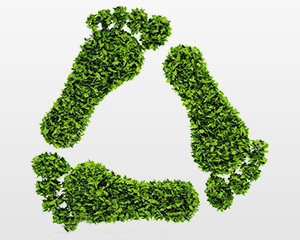
Featured Image: Source
There’s nothing like the onset of the new spring season to remind you of making a fresh start. And when we say fresh start, we really mean doing things proper this time around. Like immersing yourself in recycling techniques as the new season starts. Lucky for you we’ve got just the tips for you that can suggest ways to reduce, reuse and recycle the accumulated stuff you’ve got, most of which is just wasting away and gathering dust as we speak.
Spring means making a new beginning. So let these tips help you make an significant move for the environment in your life:
This one is pretty simple to do. Make a list of things that you will use and those that you won’t. One man’s junk is another man’s treasure so don’t throw away your stuff away. Instead, consider donating to a charity of your choice or a near relative. Items like dishes, clothes, books, toys, decorations, all are fair game and can be reused by another individual. You should check out your local Salvation Army presence and donate these ‘useless’ things. However, if you’re a patient person and want to get a better deal on your stuff, you can either hit Craigslist or barter them away.
Most of us are guilty on this count – wasting things. If you are using one whole bathroom roll to scrub the bathroom, then well, that doesn’t scream eco-friendly manners on your part. You can either use that toilet paper roll judiciously, or you can go for an alternative like reusable microfiber sponges. They can be used multiple times. A broom is also a good choice instead of the Swiffer sweeper you got. Reusable mop can also find a place in your efficient supply cabinet.
You can dust, vacuum and wipe all you want, but there’s a reason why spring is the best time to be thorough with your cleaning. You should be able to clean places that you generally gloss over. Examples include deep-cleaning the carpet rug, drapes washing and even vacuuming your refrigerator coils in order to ensure that it lasts longer and doesn’t consume excessive energy.
Junk drawers, closets, hard-to-reach shelves, basements and attics – all these places need to be turned inside out because that’s where most of the unwanted things end up. You need to toss this stuff away, and you needed to do this yesterday. Mostly people throw some things in these corners with a ‘I’ll-deal-with-these-later’ attitude, only to never ever revisit most of these things. They can be anything – some hardware you have no use of, some new clothes that you won’t wear in the near future. These things need to be get rid off as early as possible.
You know what’s great and environmentally conscious? Never having to deal with paper again. Take care of your paper junk mail with a service like GreenDimes. Set a bank account that lets your bills come through email and not regular paper mail. There will be fewer papers to file and store. Even subscribing to the digital edition of your favorite magazines can make a difference. You’ll have more space and enjoy a clutter-free life.
These are by no means an exhaustive list of tips, but they are enough to make a massive difference in your lifestyle all the year round. Don’t let stuff accumulate. Don’t buy things you are not going to need. And don’t be a coy if you’ve got some extra stuff – those can always be returned or donated. You might be surprised at the amount of e-waste that you may have got on your premises. E-waste and children don’t get along so well either, so it’s a good idea to dispose of all the unwanted stuff this spring.
Kelly Sampson is a writer, blogger, and environmental enthusiast. She has strong opinions about climate change, the dogs vs. cats debate, and Oxford commas. She has lent Hummingbird International her engaging and spirited voice and turned our blog into a great place to find valuable information about e-waste, e-waste recycling, and the ITAD industry. Explore our blog to read more of her work.